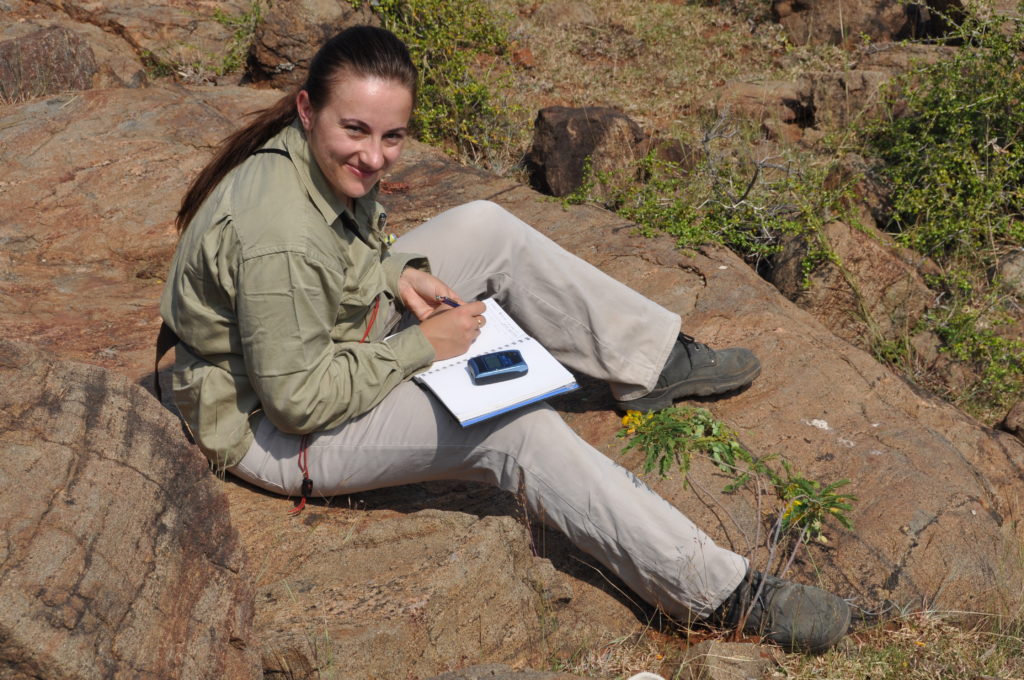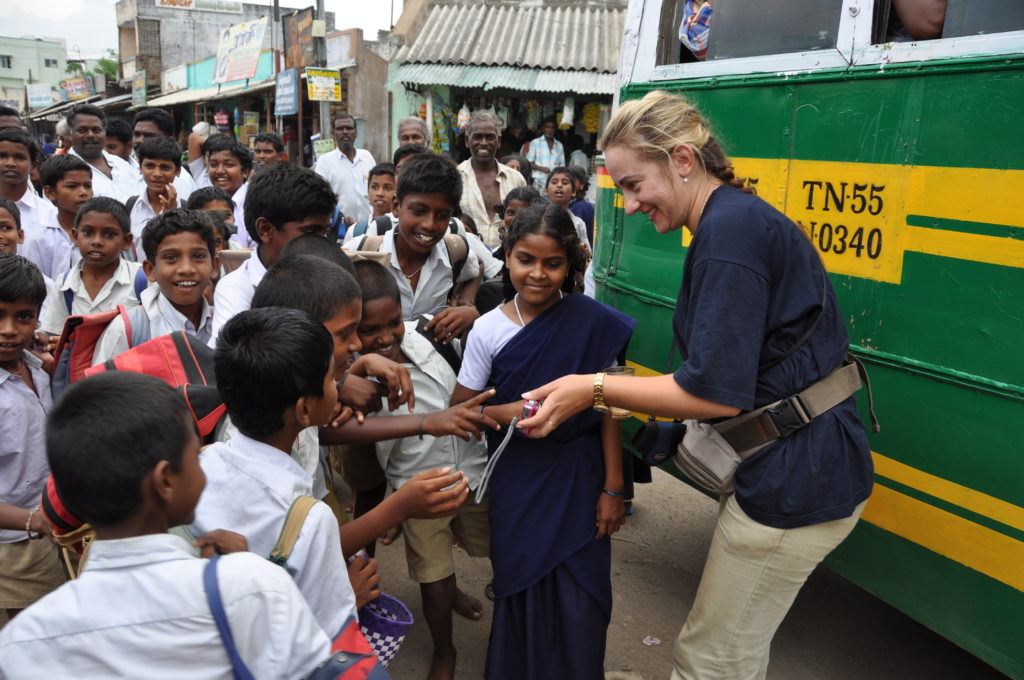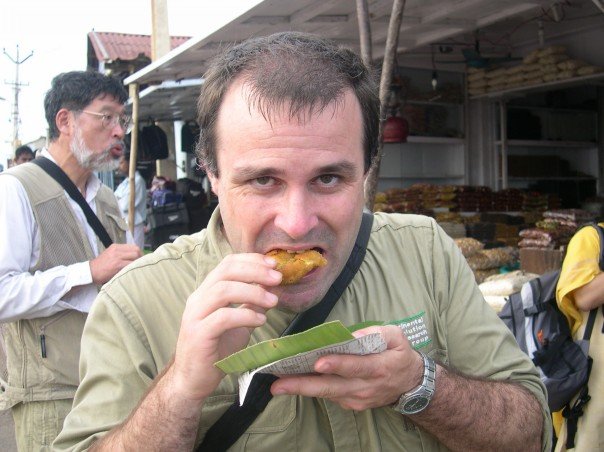Diana Plavsa is a geologist who completed her PhD at The University of Adelaide in 2014 where she was supervised by Prof Alan Collins and John Foden. Since then she has been a post-doc researcher at Curtin University working on the Capricorn Orogen.
A PhD working in southern India sounds pretty good. You imagine beautiful deserted beaches with isolated outcrops of pretty rocks and exotic mountain chains with polished pristine cliffs of amazing geology. Well, these sort of outcrops certainly exist, but my field area was inland and centred around northern Tamil Nadu, which is quite heavily populated and many of the outcrops I spend a lot of time trying to negotiate, were in old quarries that were used as rubbish dumps or public toilets; not so romantic. It was just as well that the geology was amazing!
Why so amazing? Well, the tip of Peninsula India looks sliced off on geological maps by a lithospheric-scale shear zone called the Palghat-Cauvery shear system. The name comes from the Cauvery River, which runs along it in the east, and the Palghat gap – a break in the western Ghats mountain range that runs along the whole west coast of India. This system of shear zones marks the collision between an ancient version of India and much of Africa at about 570 million years ago, which formed a Himalayan-scale collision in the amalgamation of Gondwana.
There is something about India …
India seems to have a penchant for forming huge mountain ranges! In the Modern Earth the Himalaya and Tibet plateau are the type example of a continent-continent collision and the largest orogen on the planet. If you look back through time, there aren’t many examples of Himalaya/Tibet style orogens. Well, really the only other example of a larger than 1,000 km wide mountain plateau in the geological record is in southern India, Sri Lanka, Madagascar and East Africa (these places were all contiguous in Gondwana). So my PhD wanderings over southern India involved investigating the geology of the equivalent of a section through a 550 Ma old Tibet, with the top 30kms removed! Pretty amazing, and the rocks are amazing as well, with many beautiful metasedimentary pelites, some of these are so rich in garnet that they glisten in the sun and you can see the red colour from hundreds of metres away.
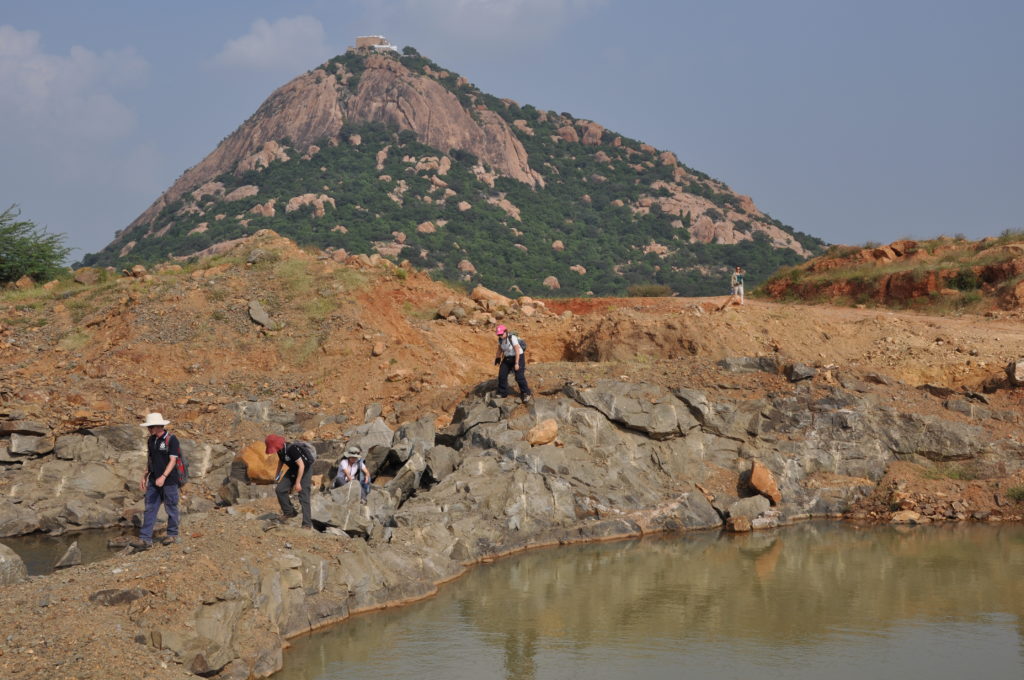
Neoarchaean charnockites at Ayyarmalai, Tamil Nadu. Diana Plavsa bringing up the rear, with University of Adelaide Honours students William Teale, Elizabeth Metz, Jade Anderson and Stephanie Rowe from front to back.
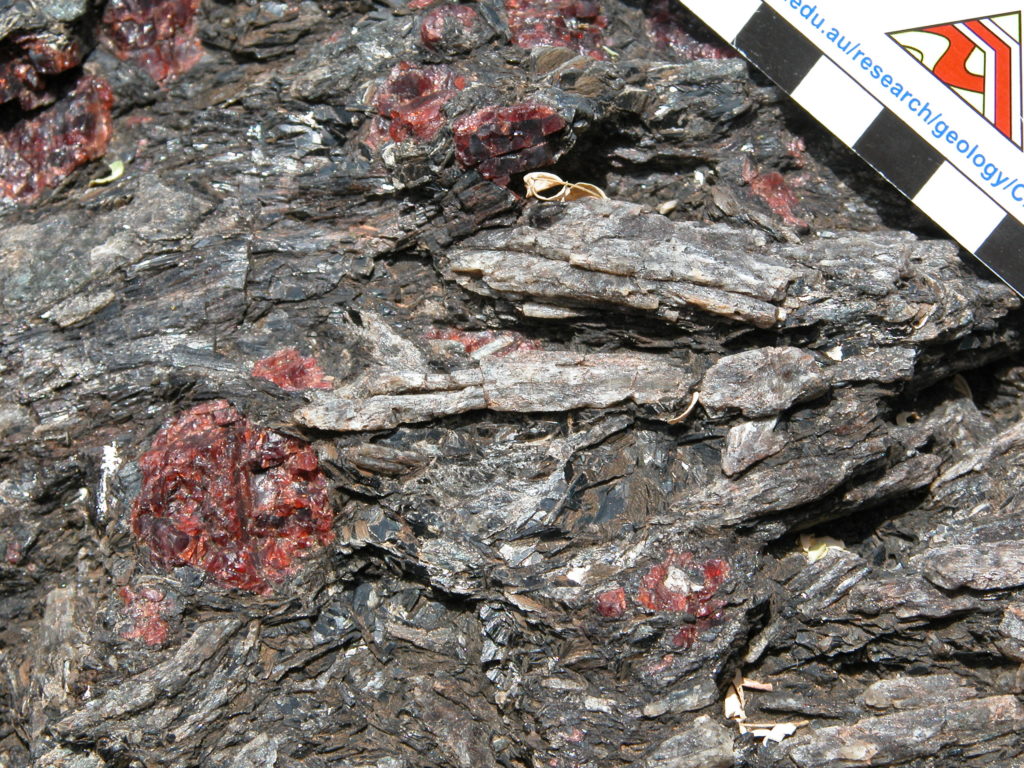
Spectacular garnet+kyanite+gedrite+biotite metasedimentary rock, Panangad. These rocks lie within the Palghat-Cauvery shear system, a suture between Neoproterozoic India and the Madurai Block to the south. Photo by Chris Clark.
The geography of this part of the world, north and west Tamil Nadu, is one with incised relic mountain ranges that rise up to 2,000 metres and are garnished with tea estates and dotted with old British-era hill resorts. These mountain ranges and ridges gaze over brown parched plains that represent by old wave-cut platforms now high and dry. The ranges tend to be made from metamorphosed igneous rocks and the plains have more metasedimentary rocks preserved in them. It is an ancient land with cities such as Madurai, whose origins are lost in antiquity, but was a major at the time of the Romans. Everywhere you go in this part of India, you come across roadside shrines and holy trees that link the place and the people over many millennia.
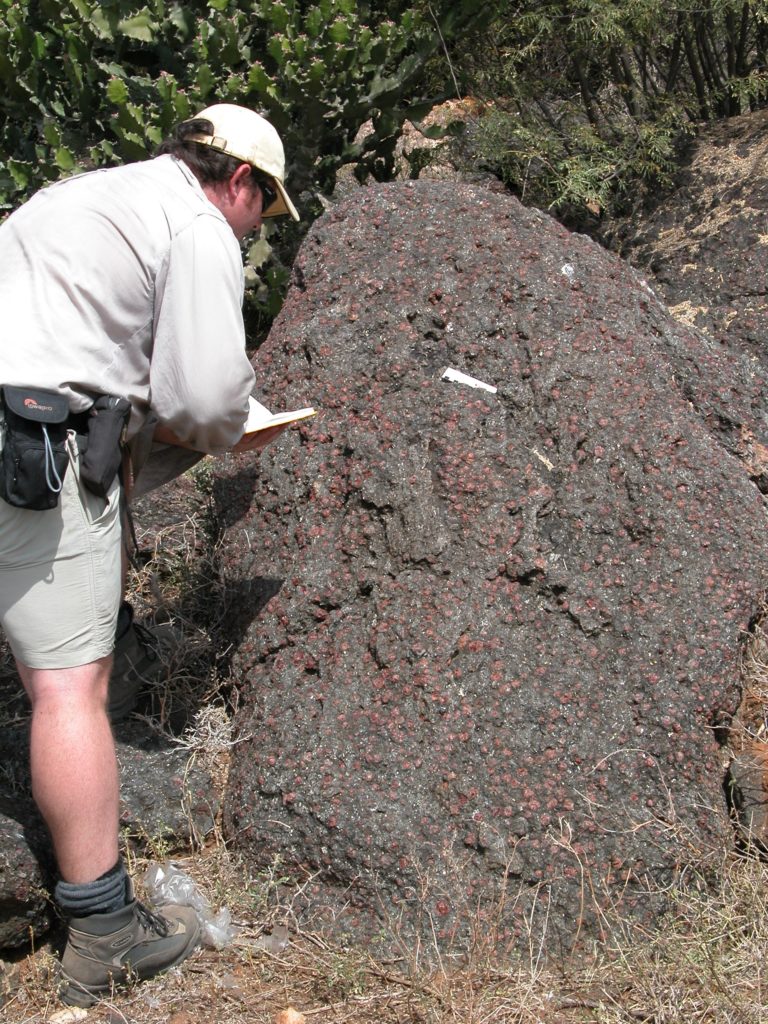
A/Prof Chris Clark (Curtin Unviersity) looking the spectacular Panangad outcrop near Karur, Tamil Nadu
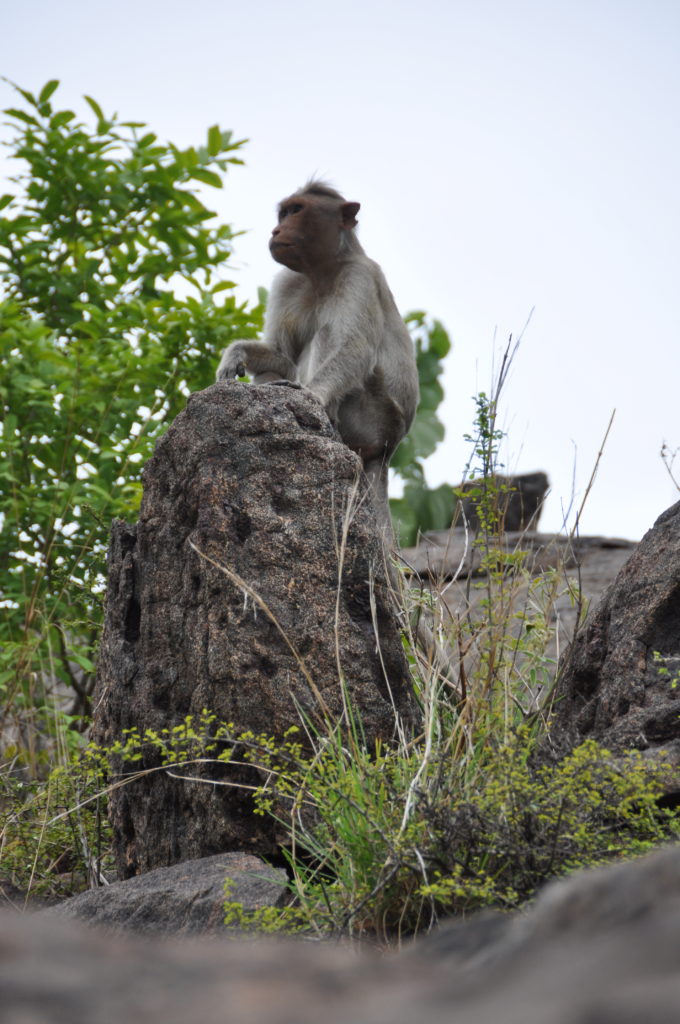
Monkeys acting as a sentinel at Kanjamalai, some the world’s oldest high-pressure metamorphic rocks at 2.45 Ga.
During my PhD, I have got to take apart this Southern Granulite Terrane and use it as part of a larger aim, that of reconstructing the plate tectonics of the Neoproterozoic. This has been possible because this part of India wasn’t India at all in the Neoproterozoic. My work has shown that these rocks have more in common with Madagascar and even East Africa than they do with Neoproterozoic India, suggesting that an ancient ocean separated them until Neoproterozoic India collided with Africa and formed this part of Gondwana in the late Ediacaran.
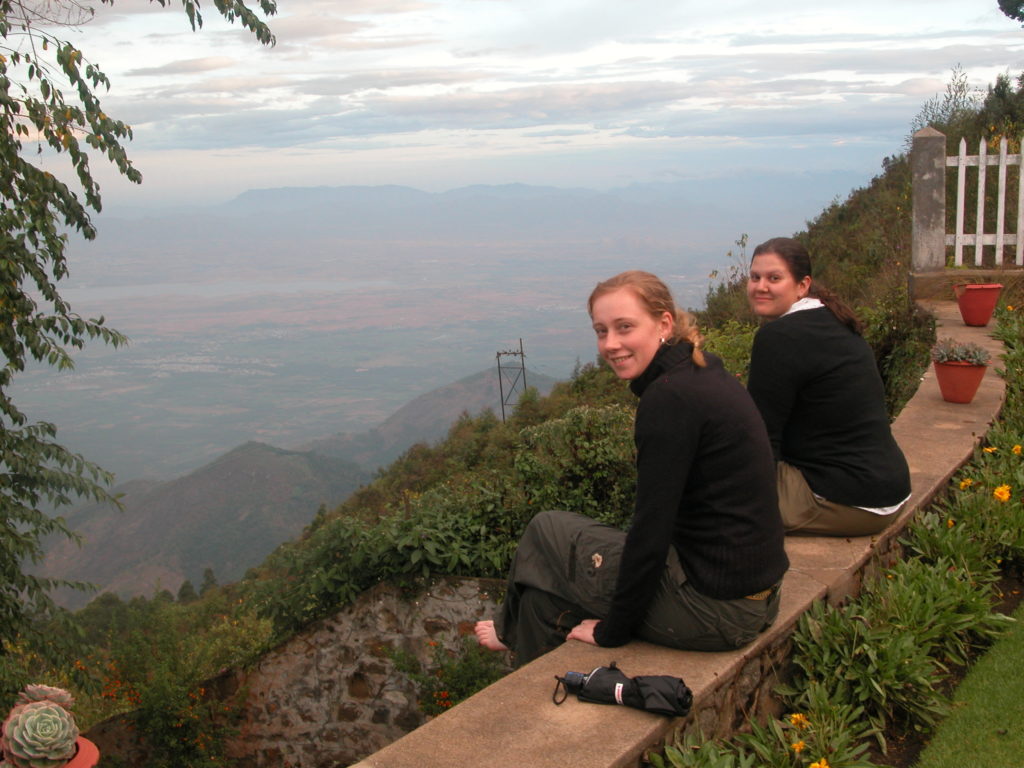
University of Adelaide Honours students Stephanie Mackintosh and Louise Kropinski at Kodiakanal, sitting on Neoarchaean metaigneous rocks looking south over metasedimentary rocks of the Madurai Block, nearly 2,000m below them.
Further information on this work:
Vijaya Kumar, T., Bhaskar Rao, Y.J., Plavsa, D., Collins, A.S., Tomson, J.K., Vijaya Gopal, B., Babu, E.V.S.S.K., 2017. Zircon U-Pb ages and Hf isotopic systematics of charnockite gneisses from the Ediacaran-Cambrian high-grade metamorphic terrains, southern India: constraints on crust formation, recycling and Gondwana correlations. Geological Society of America, Bulletin, 129, 625-648.
Plavsa D., Collins, A.S., Foden, J.D., Clark, C. 2015. The evolution of a Gondwanan Collisional Orogen: a structural and geochronological appraisal from the Southern Granulite Terrane, South India. Tectonics, 34, 820-857.
Plavsa D., Collins, A.S., Payne, J.L., Foden, J.D., Clark, C. and Santosh, M. 2014. Detrital Zircons in Basement Metasedimentary Protoliths Unveil the Origins of Southern India. Geological Society of America, Bulletin, 126, 791-811.
Collins, A.S., Clark, C. & Plavsa, D. 2014. Peninsular India in Gondwana: The Tectonothermal Evolution of the Southern Granulite Terrane and its Gondwanan Counterparts. Gondwana Research, 25, 190-203
Plavsa D., Collins, A.S., Foden, J.F., Kropinski, L., Santosh, M., Chetty, T.R.K. and Clark, C., 2012. Delineating Crustal Domains in Peninsular India: Age and Chemistry of Orthopyroxene-Bearing Felsic Gneisses in the Maduari Block. Precambrian Research. 198-199, 77-93.
![]() This work is licensed under a Creative Commons Attribution-NonCommercial-ShareAlike 4.0 International License.
This work is licensed under a Creative Commons Attribution-NonCommercial-ShareAlike 4.0 International License.

